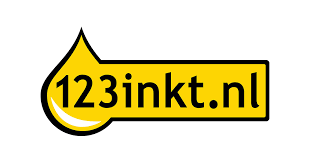We have it on black and white: a remanufactured ink cartridge has half the climate impact of a new one. This is the conclusion of a life cycle assessment (LCA) carried out by Hedgehog for 123inkt.nl, the market leader in online office supplies. In this study, both cartridges were compared across all life cycle stages: from production to waste.
An LCA is an internationally standardised method of measuring the environmental impact of a product. The study shows where in the supply chain the greatest environmental burden occurs. This gives companies insight into where they can make their processes more sustainable or how they can communicate transparently about their climate policy.
Together with Daan Eigenfeld, Senior Project Manager at 123inkt.nl, we looked back at the process, the results, and the next steps.
How did the LCA go?
123inkt.nl wanted to know to what extent their remanufactured cartridge was better for the environment. That’s why they asked Hedgehog to compare the original HP 304 XL cartridge (OEM), a completely newly manufactured cartridge, and the Reman, the remanufactured variant. Remanufactured means reused: an old cartridge that is refurbished, checked, and refilled with ink.
“Hedgehog’s pragmatic approach appealed to us right away. We worked closely with Nata (Sustainability Expert at Hedgehog); she knew exactly what she was doing and understood our position as a commercial company very well,” said Eigenfeld.
For a fair comparison, the benchmark was 100 standard pages with 5% black ink coverage. Data was then collected on the different production processes. This required close contact with the manufacturers. Data collection is a crucial part of an LCA ,yet this can often be complex, depending on where the product data needs to come from. As Eigenfeld pointed out: “Because we work with our own factories for the Reman, we could provide the correct data more quickly. For the OEM, we rely on factories in China, and that required quite a few calls with Nata first.”
To obtain reliable data on the OEM, secondary sources such as scientific reports were also used. In addition, various experts formed a review panel to assess the LCA.
The end result
Using the Reman means no new cartridge has to be produced. This eliminates the need for new raw materials. The outcome of the comparison was therefore not particularly surprising, since raw material consumption is a major impact category. The remanufactured cartridge performed significantly better than the original cartridge in every measured area:
- 46.5% less impact on climate change
- Almost 95% less use of metals and minerals
- Lower fossil fuel consumption
- Less air and water pollution
For the OEM cartridge, the use of metals and minerals contributes most to environmental impact. For the Reman, climate change (CO₂ emissions) is the most important category, but it still performs better there as well.
Perhaps the most striking conclusion from this study is that reusing products delivers measurable results. By reusing a product, you directly reduce CO₂ emissions, raw material use, and pollution.
What surprised you most?
Despite the expected outcome, Eigenfeld was somewhat surprised by the sheer amount of data an LCA produces:
“The results are much more complex than I thought. It’s about all aspects, not just one variable. This is different from a quick LCA, where the outcome is very straightforward: one product is more sustainable than another.”
A comprehensive LCA includes multiple impact categories, such as CO₂ emissions, water use, and raw material consumption. This gives you far more variables and figures, and a product may score better in one category than in another.
What are the next steps for 123inkt?
The results are currently being discussed internally at 123inkt.nl. “We’d like to communicate about this, for example in a blog post,” says Eigenfeld. “In addition, the insights allow us to explain our remanufactured products more clearly. We are now also considering LCAs for other product groups.”




.jpeg)
.webp)

